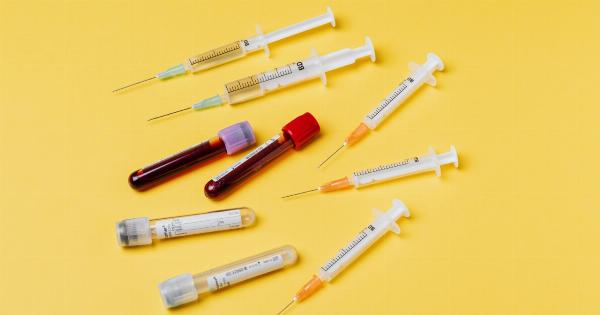Blood transfusion is a medical procedure that has saved countless lives. However, it is essential to note that a vital component of blood transfusion efficacy is that blood loses its potency over time.
This article aims to discuss this phenomenon and its impacts on medical practice.
What happens to blood after it’s saved?
Once extracted, blood is typically separated into different components, including red blood cells, platelets, plasma, and white blood cells. These components are stored separately in bags composed of different materials, depending on their function.
To prevent contamination and potential deterioration, the bags are kept at a specific temperature range and in a controlled environment.
However, even under optimal storage conditions, blood components can lose their efficacy over time. This is because several factors can lead to the deterioration of the cells.
For example, red blood cells can break down faster than expected or become less capable of carrying oxygen, while platelets may lose their ability to form clots or become damaged.
How long can saved blood stay potent?
The efficaciousness of stored blood depends on several factors, including the type of component, storage conditions, and the length of time it has been stored.
Typically, red blood cells can last up to 42 days, while platelets can last between five and seven days. On the other hand, plasma can be stored for a more extended period than platelets or red blood cells. However, it still loses its efficacy over time and may become unusable after one year.
The point at which blood components lose their efficacy is known as the expiration date.
Transfusing blood components beyond the expiration date may not be effective in treating patients, and can even be risky, as it can lead to severe reactions such as fever, chills, and anaphylaxis.
Impacts of blood losing efficacy shortly after being saved
The phenomenon of blood losing its efficacy over time has several impacts on the medical practice. These include:.
Reduced efficacy in treating patients
The most significant impact of blood losing its potency over time is reduced efficacy in treating patients.
If blood components are not stored correctly or used beyond their expiration date, they may not function effectively in treating various medical conditions. This can lead to a delay in recovery, prolonged illness, or even death.
Increased demand for blood
Given that blood components have a limited shelf life, increased demand for blood is a crucial issue in medical practice. While blood banks collect donated blood, it’s essential to ensure that blood is not wasted or discarded.
However, due to the limited storage time, blood banks need to keep replenishing their stock constantly, leading to a need for increased donations.
Increased costs of blood transfusion
The process of collecting, storing, and administering blood components is costly. With the limited expiration date, health centers and blood banks need to ensure that they maintain an adequate supply of blood components to meet the demand.
This, coupled with the cost of regular screening and testing for bloodborne illnesses, significantly increases the cost of blood transfusion.
Measures to mitigate the impacts of blood losing efficacy
Several measures can be taken to mitigate the impacts of blood losing its efficacy over time. These include:.
Regular updates on blood inventory
To ensure that blood components are not wasted or discarded, regular updates on inventory are essential. This enables blood banks and medical facilities to know when they need to replenish their stock adequately.
Efficient use of blood components
Blood components can be used more efficiently through better screening and matching processes. This ensures that patients receive the components they need and eliminates the risk of using components that can cause adverse reactions.
Innovation in blood preservation technology
Technological innovation in blood preservation technology can help prolong the shelf life of blood components, thereby reducing the demand for constant replenishment of stock.
This can be achieved through better storage conditions or using new preservation methods that improve the efficacy of blood components.
Conclusion
Like any other medical procedure, the efficacy of blood transfusion depends on several factors. One critical factor is the length of time blood components have been stored.
While blood transfusions can indeed save lives, it’s critical to understand the phenomenon of blood losing its efficacy over time. This will help medical professionals make informed decisions about the use of blood components and ensure that patients receive the best possible medical attention.


























